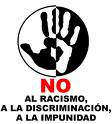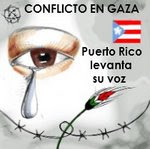
Etienne Cardona, owner of Café Hacienda San Pedro in San Juan, said he couldn’t get a bank loan to open a second shop.
The latest American banking crisis is taking shape far from Wall Street and the empty subdivisions that stretch across the Sun Belt.
The trouble this time is in Puerto Rico, the Caribbean commonwealth whose banks have been laid low by economic woes that make the mainland’s recession seem mild.
Now, Washington policy makers, who watch over the territory’s banks as they do its defense and foreign relations, are moving to broker mergers among several major lenders there to head off what could be a series of costly failures. Deals could come as early as Friday.
Few people probably realize that the Federal Deposit Insurance Corporation, which insures bank deposits in the 50 states, also insures billions of deposits in Puerto Rico. So if a bank in Puerto Rico goes under, customers are protected.
Rising unemployment, sinking real estate values and deteriorating government finances have worsened Puerto Rico’s chronically troubled economy and added new urgency to the efforts to shore up its banks. Loans are scarce, making life even harder for many local businesses.
Etienne Cardona, the owner of Café Hacienda San Pedro, a coffee shop in San Juan, has been trying for six months to get an $80,000 loan to open a second location.
“They ask for so many details that require a substantial investment before the loan is even approved that we decided to put off the project,” Mr. Cardona said. “For now, and until things get better, we’ll just stay here.”
A lending slowdown of this kind often causes a vicious circle — slower growth, more job losses and, in turn, an even sharper pullback in lending.
“This why it is so important for the banking system to get back on its feet,” said Troy Wright, president of the Puerto Rico Bankers Association and the head of Scotiabank’s operations there.
At least three of Puerto Rico’s banks — Eurobank, R-G Premier Bank and Westernbank — are operating under cease-and-desist orders from regulators, restricting their ability to make new loans. They had been given until March 31 to raise new capital or combine with healthier banks.
Now that the deadline has come and gone, regulators have been working on a confidential plan to auction off the lenders, according to several people involved in the situation. It is known as Project Themis, after the Greek goddess of divine law and order.
Regulators are hoping to strengthen the territory’s banking system by forcing its consolidation, while also weaning lenders from the high-cost deposits they obtain from the mainland to make loans, these people said.
Even as the government ends other support programs, they said, the agency is expected to make temporary financing available to the acquirers to help replace those more expensive deposits. Bids were due this week, they added.
In all, the efforts could cost the F.D.I.C. insurance fund as much as $5 billion, some analysts estimate.
Puerto Rico is not exactly the Iceland of the Caribbean. But like that economically troubled nation, Puerto Rico is an island financially as well as geographically. That makes fixing its banking system a delicate task.
Only 11 banks operate in Puerto Rico, and the three most-troubled institutions hold more than a quarter of all deposits. By comparison, more than 200 of the United States’ 8,000 or so lenders have collapsed since the credit crisis began.
Because deposits are concentrated in so few institutions, regulators have been confronted by a number of vexing questions.
How, for instance, does the government seize one or more of the banks without setting off a run on others? (Answer: Coordinate plans to close them.)
How does it avoid imperiling healthy banks, which would be required to mark down the value of their own loan portfolios if similar assets flooded the market at fire-sale prices? (Answer: Make maintaining a big capital cushion a requirement for bidding.)
And how exactly does the government lure investors to pour capital into an overbuilt economy with excess banking capacity amid the worst downturn in generations? (Answer: The F.D.I.C., as it has in the past, would absorb a big portion of the losses.)
Senior officials from the Treasury Department, which has $1.2 billion invested in two of Puerto Rico’s stronger banks, have weighed in on the strategy.
So have other major regulators, including the Federal Reserve Bank of New York, which supplies currency to Puerto Rico, and the commonwealth’s Office of the Commissioner of Financial Institutions.
The F.D.I.C. has hired Deutsche Bank to act as an adviser on merger and auction plans.
Some of Puerto Rico’s healthier banks have been shoring up their finances in anticipation of once-in-a-lifetime deals.
Doral Financial, for instance, announced last week that it would raise an additional $600 million from private investors to pursue government-assisted acquisitions.
Banco Popular de Puerto Rico raised over $1 billion this month. Oriental Financial Group raised $100 million in March. Some overseas banks with operations on the island, like Scotiabank of Canada and Banco Santander of Spain, have also expressed interest.
Even in better times, Puerto Rico’s banks struggled to gather enough local deposits to keep up with the demand for new loans.
One reason was that Puerto Rico’s four million residents generally have lower income and personal savings than people on the mainland.
Another was the elimination of a lucrative tax break in 2006 that led big corporations to retreat from Puerto Rico, taking their money with them.
An enormous deposit shortfall has developed among the banks. Of the $60 billion of loans outstanding, nearly 60 percent, or $35 billion, have been financed with customer deposits, research from FBR Capital Markets said. On the mainland, by contrast, deposits typically finance about 80 percent of lending.
As a result, Puerto Rico’s banks have had to raise money from savers on the mainland, a costlier and riskier form of financing.
Even before the financial crisis began, the territory was in a deep recession.
The economy has been shrinking for the last four years, and the island’s 16.2 percent unemployment rate far exceeds that of Michigan, which has the highest jobless rate of any state.
The property market is also suffering from its own real estate hangover. Most banks tolerated higher debt levels on construction projects than did their mainland peers.
Some, like Banco Popular and First Bank of Puerto Rico, also financed projects in South Florida and other hot markets in the United States that have since faltered.
“It’s like a fever that extends to a patient that was already sick,” said Heidie Calero, a local economist who advises real estate developers.
Now, Puerto Rico’s lenders are paying the price. About 8.2 percent of loans were either past due or in default in the fourth quarter of 2009, according to Foresight Analytics. That compares with an average of 3 percent on the mainland.
April 29, 2010
Puerto Rican Lenders Face Their Own Crisis
By ERIC DASHOmaya Sosa-Pascual contributed reporting.
Marie D. De Jesus for The New York Times.



















No hay comentarios:
Publicar un comentario